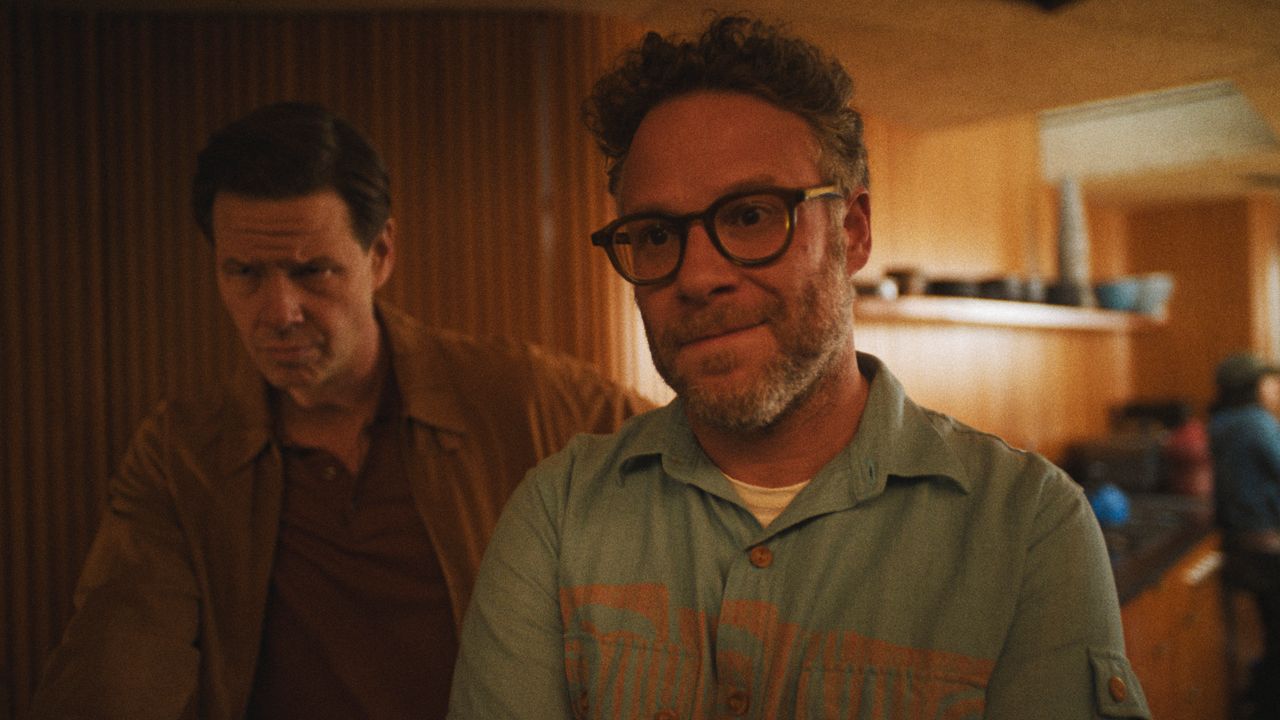“Unbelievably stressful,” is how Seth Rogen describes shooting the final sequence of “The Oner,” the ambitious second episode of his new Apple TV+ series The Studio. Rogen stars in the series as the very well-meaning, very hapless, newly-appointed studio president Matt Remick. His visit to the set of the prestige lesbian drama the studio is producing—directed by Sarah Polley and starring Greta Lee, both playing themselves—has gone disastrously. The crew is attempting to shoot a oner—a long, unbroken take—to close the film, but Matt’s earnest attempts to contribute creatively have caused them to blow every shot so far, until finally Polley, in a full rage, explodes and kicks him off the set. All this as the sun is setting and on the last day of shooting, magic hour dwindling. And of course, like Polley’s movie-within-a-show, it’s all a oner.
In fact, every individual scene in The Studio is a oner, but “The Oner,” as its title suggests, stretches a oner for a full episode. It’s an age-old technique, often deployed by filmmakers flexing their acrobatic skills, and all the rage once again between Rogen’s new show and Netflix’s series Adolescence, the buzzed-about UK miniseries whose four episodes each unfold in one hour-long take. Unlike Adolescence, which did its long-take episodes for real, “The Oner” uses visual effects to stitch together several smaller, but still quite long and elaborate shots. According to Rogen, the episode was split into about four large chunks, though the original intention was to break it up even more. Rogen, who co-directed the series with Evan Goldberg, quickly discovered that splitting the shot up too much was more hassle than it was worth, with things looking janky cut together.
“We found pretty early on that whenever we could shoot in order, it made it so much better,” Rogen says. “And whenever we were kind of compartmentalizing parts of these long shots, it made it so much worse.” Light was also a problem. The episode was set during magic hour, and they found that attempts to shoot smaller chunks during the day wouldn’t match up with the quality of light in the evening. The team decided to keep things simple: rehearse during the day, and then shoot, over the course of four days, during the 90-odd minutes when the light looked right.
“It’s very counterintuitive on a set to be like, okay, everyone’s here at 8:00 in the morning and we’re not even rolling cameras till 5:30 pm basically,” Rogen says. “It allowed us a lot of time to really work it out and dial it in on the day, and then we would film it very fast. It really felt like the episode, because we were actually fighting against the sun going down.” In that final sequence, the sun is very literally meant to be going down. Matt, having ruined the shot by parking his car on the set, is rushing alongside underling Sal Saperstein, played by Ike Barinholtz, to find his keys somewhere in the production’s rented Hollywood Hills mansion before finally driving off into the night.
“The last day, we edged into actual nighttime,” Rogen recalls. In the scene, Matt is meant to scramble out of the house, bumping into a production assistant and spilling iced coffee all over himself before getting into the car, at which point the camera attaches to a rig on the hood of the car so they can drive away. Only, the Wi-Fi was on the fritz, causing the rig not to work. “It really was like the show,” Rogen says. “Because of this gag with the cup, I was all wet and covered in coffee, and I had to change every single time it didn’t work.”

